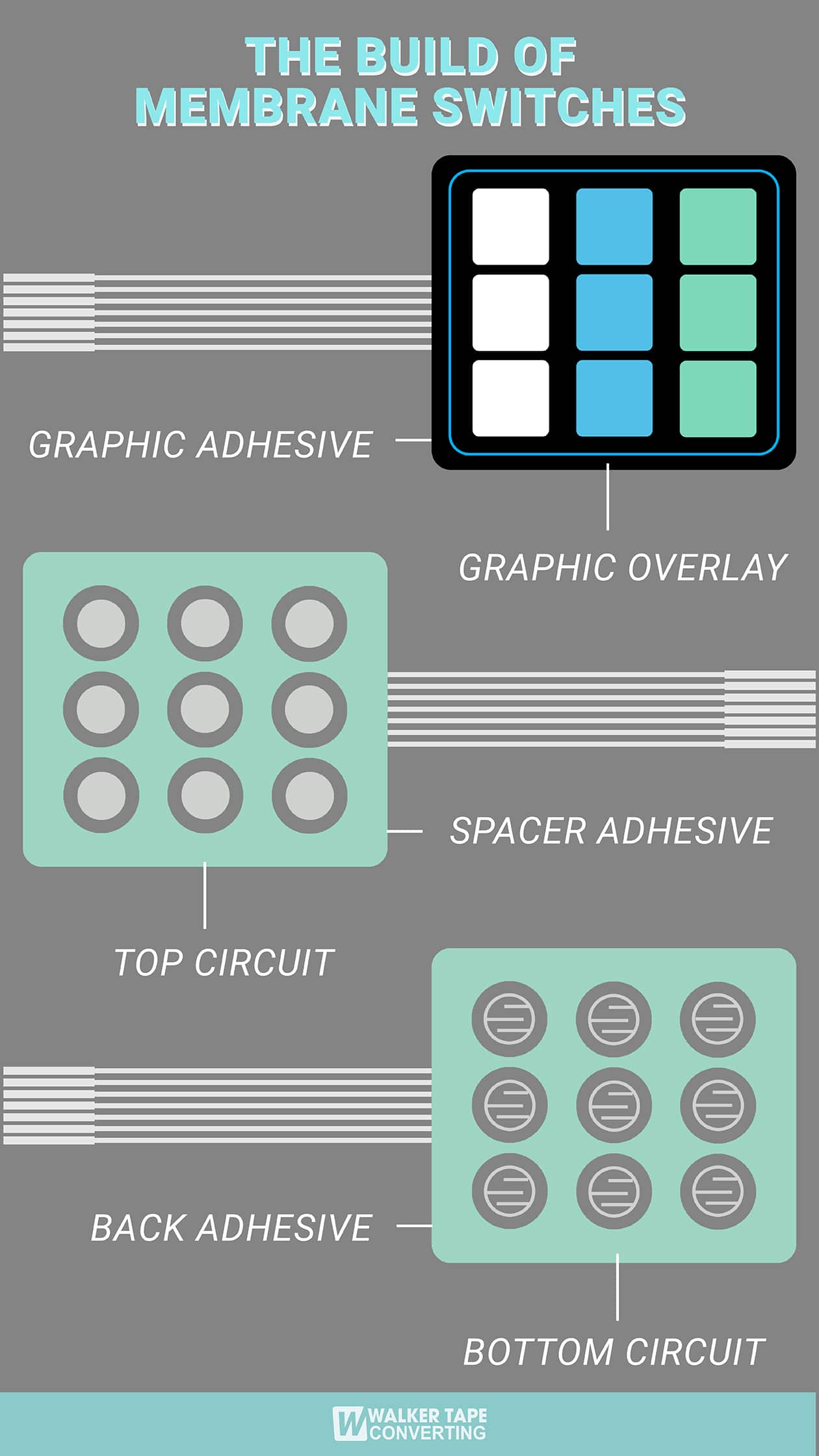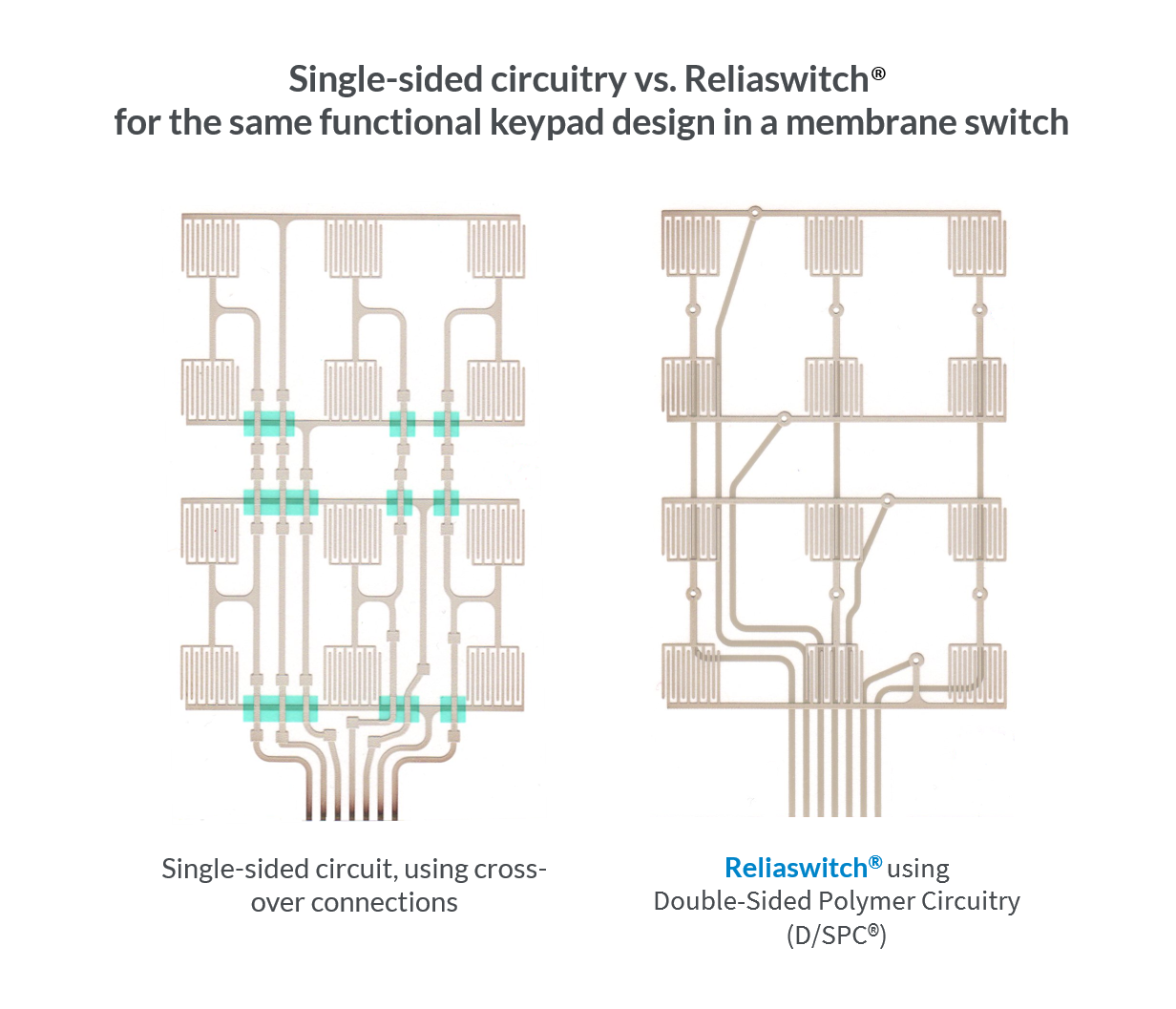Recognizing the Relevance of Membrane Layer Change in Modern Electronics
Membrane buttons are indispensable components in modern electronic gadgets. They offer a blend of capability and style that enhances customer interaction. Their long lasting and lightweight nature makes them appropriate for various applications. As sectors evolve, the demand for customization and advanced attributes grows. Comprehending how membrane layer switches over add to development reveals their significance in shaping the future of electronic devices. What lies ahead for this modern technology?
The Fundamentals of Membrane Change Innovation
Although frequently ignored, membrane switch modern technology plays an essential function in the modern electronic devices landscape - membrane switch. These tools, composed of numerous layers, work as interface for numerous digital items, varying from home appliances to clinical equipment. A common membrane layer switch is composed of a graphic overlay, a spacer layer, and a circuit layer, which are thoroughly constructed to develop a functional interface.When pressure is used to the overlay, the circuit layer is finished, permitting signals to be sent to the tool. This modern technology is recognized for its convenience, enabling modification in style, shape, and capability to fulfill details individual needs. Furthermore, membrane buttons are thin and lightweight, making them appropriate for applications where space is a costs. Their longevity and resistance to ecological elements better improve their appeal, guaranteeing they can stand up to severe conditions while keeping performance. On the whole, membrane switch technology is important to developing user-friendly and efficient digital gadgets

Trick Advantages of Membrane Layer Switches
Membrane switches offer numerous crucial advantages that make them a preferred choice in different digital applications. Their design permits for a small type factor, making it possible for makers to create lightweight and streamlined devices. In addition, membrane layer buttons are resistant to dust, dampness, and chemicals, which improves their longevity and longevity in demanding atmospheres. The responsive feedback provided by these buttons can improve individual experience, making them instinctive and simple to operate.Furthermore, membrane switches can be tailored with diverse graphics and shades, permitting unique branding chances. The production procedure is usually cost-effective, especially for high-volume manufacturing, as it reduces assembly time and simplifies layout. Finally, membrane switches over require very little maintenance, adding to reduced overall functional prices. These benefits emphasize their growing popularity in modern-day electronics, where reliability and easy to use user interfaces are essential.

Applications Throughout Numerous Industries
The versatility of membrane layer switches allows their widespread fostering throughout various sectors. In the clinical area, they are typically utilized in diagnostic tools and person monitoring systems, using a sturdy interface immune to pollutants. The auto market uses membrane switches for control panel controls, enhancing individual experience with sleek designs that hold up against rough problems. In customer electronics, they act as control board for devices such as microwaves and coffee machine, offering an easy to use user interface that is simple to clean. The aerospace sector uses membrane buttons in cabin controls, where dependability and space performance are extremely important. In addition, the industrial field leverages these switches in machinery and control systems to guarantee robust operation sought after atmospheres. This wide variety of applications emphasizes the adaptability of membrane buttons, making them indispensable components in enhancing performance and customer interaction throughout diverse technical landscapes.
Customization and Style Versatility

Future Fads in Membrane Layer Switch Over Development
Emerging patterns in membrane layer switch advancement show a growing emphasis on enhanced functionality and assimilation with smart innovations. As customer need for extra Related Site innovative digital gadgets increases, makers are focusing on developing membrane switches over that not just serve fundamental operational functions yet likewise integrate attributes like touch sensitivity, backlighting, and haptic feedback.Furthermore, developments in products are anticipated to improve resilience and environmental resistance, making membrane layer switches appropriate for varied applications in sectors such as medical care, auto, and customer electronics. The integration of capacitive touch technology is most likely to end up being more prevalent, enabling sleeker styles and improved user interfaces. membrane switch.Additionally, the surge of the Web of Things (IoT) is motivating the development of membrane switches that can communicate wirelessly with various other gadgets, boosting interconnectivity. Overall, the future of membrane layer switch innovation appears encouraging, driven by development and the quest of easy to use remedies
Regularly Asked Questions
How Do Membrane Layer Switches Over Compare to Conventional Mechanical Buttons?
Membrane switches, being much more space-efficient and using a streamlined layout, comparison with typical mechanical buttons that supply responsive feedback. The former commonly include personalized graphics, while the last usually guarantee longevity and dependability in various applications.
What Products Are Frequently Made Use Of in Membrane Layer Switch Production?
Membrane layer switches are normally generated using materials such as polyester, polycarbonate, and printed conductive inks. These products supply responsiveness, adaptability, and sturdiness, making them appropriate for different applications in electronic tools and user interfaces.
Can Membrane Layer Switches Over Be Fixed or Reused?
Membrane buttons can commonly be repaired, specifically if minor problems occur, such as sticky failure or surface damage. Nevertheless, full reuse is usually restricted because of use and possible deterioration of materials in time.
Exactly How Do Ecological Aspects Influence Membrane Switch Over Efficiency?
Environmental variables, such as temperature level, humidity, and direct exposure to chemicals, substantially influence membrane button efficiency. Extreme problems can cause degradation, impacting responsiveness and long life, inevitably jeopardizing the functionality of the gadget in numerous applications.
What Is the Common Lifespan of a Membrane Layer Switch?
The common life-span of a membrane layer switch usually varies from 1 to 5 million actuations, relying on factors such as use regularity, ecological problems, and the products utilized in manufacturing, affecting longevity and efficiency durability. A common membrane switch is composed of a visuals overlay, useful content a spacer layer, and a circuit layer, which are meticulously set up to develop a practical interface - membrane switch.When pressure is applied to the overlay, the circuit layer is completed, allowing signals to be transmitted to the gadget. The responsive responses given by these switches can enhance customer experience, making them user-friendly and simple to operate.Furthermore, membrane buttons can be customized with varied graphics and colors, allowing for distinct branding possibilities. As consumer demand for much more advanced electronic gadgets boosts, makers are concentrating on producing membrane switches over that not only offer standard functional functions but also include attributes like touch level of sensitivity, backlighting, and haptic feedback.Furthermore, innovations in products are anticipated to boost sturdiness and environmental resistance, making membrane switches over ideal for varied applications in markets such as healthcare, vehicle, and consumer electronic devices. The blog integration of capacitive touch modern technology is likely to come to be much more common, allowing for sleeker designs and enhanced customer interfaces.Additionally, the surge of the Net of Things (IoT) is prompting the development of membrane layer switches that can communicate wirelessly with various other devices, enhancing interconnectivity. Membrane layer switches, being much more space-efficient and offering a streamlined design, comparison with typical mechanical switches that provide responsive comments